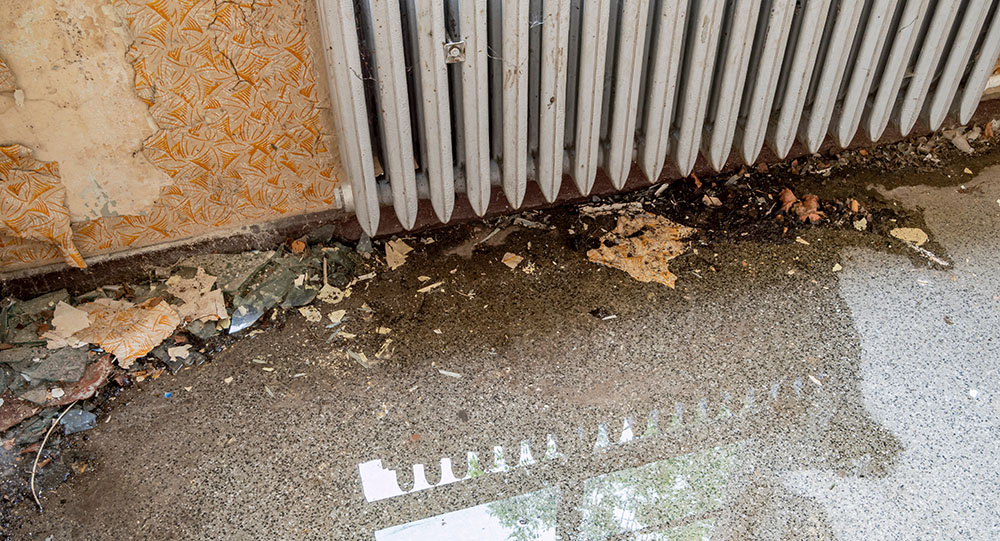How to Prevent Mould During Flood Cleaning

CONTENTS
- Understanding mould growth after a flood
- The health hazards of mould exposure
- Identifying mould in your home after a flood
- Professional vs. DIY Flood Cleaning
- Preventing future mould growth after a flood
- Frequently asked questions
- Get in touch
The aftermath of a flood can damage your home and belongings but also attract an invasion of mould. Understanding and tackling mould during flood cleaning can be difficult when mould spores can accumulate in damp corners, threatening your home's integrity and your health.
At ICE Cleaning, we operate nationwide to deliver excellent mould remediation services. Our innovative technology and industrial-grade solutions help us discover the root cause of mould in your home, provide expert advice, and help you keep mould at bay in the future.
Read on to learn more about identifying these hidden hazards after flooding incidents.
Understanding mould growth after a flood
After a flood, mould becomes more likely the longer the water damage is left, and may develop into a bigger issue. The excess water creates an ideal environment for mould spores to thrive. Warm, damp conditions are the perfect breeding ground for mould to create a colony and spread spores.
Mould feeds off organic materials such as wood and paper, and when combined with the humidity left by floods, the odds of a mould infestation increase. It is important to understand that dealing with this problem is a matter of health and safety.
The health hazards of mould exposure
Exposure to mould during flood cleaning can result in health complications. The World Health Organisation cautions that continual contact with mould can cause respiratory ailments, allergic reactions and even mental health difficulties.
Mould spores are microscopic and easily inhaled, potentially causing lung infections or triggering asthma attacks in asthmatics. A study from the European Respiratory Review linked indoor mould with an increase in asthma in young children.
Living in spaces infested with mould has been linked to poor mental health in research revealed in the American Public Health Association's journal. Therefore, it is essential to ensure proper cleaning post-flood, both for your home and your well-being.
Identifying mould in your home after a flood
Floods often bring about the ideal conditions for mould to thrive. The first step towards fixing this problem is spotting it early on. Mould is identifiable by its distinct odour and fuzzy appearance.
Mould is likely to be present on surfaces damaged by water, like walls, ceilings, furniture and other items. You might spot patches of black, green or white growth. But remember, not all mould is visible as it hides behind wall coverings or carpets.
Professional vs. DIY Flood Cleaning
While doing it yourself could save money upfront, professional help often proves more efficient. DIY cleaning lets you start immediately but does not guarantee complete mould removal.
Mould embeds itself into various surfaces across your home, so even if you remove the surface growth, it will come back.
On the other hand, experts have training and experience in spotting these hidden hazards. They use advanced techniques like thermal imaging to ensure all mould is eradicated at the source.
By attempting to clean up mould after a flood by yourself, you are exposing yourself to various hazards. These include the dangers left behind by the flood and the mould growths, which may cause illness or injury. You must always leave these tasks to an expert.
Preventing future mould growth after a flood
To stop mould from growing after a flood, you must focus on moisture control and regular maintenance. It is vital to keep the property as dry as possible. The first step is drying out your home.
Using dehumidifiers or fans can help speed up this process, and you should also ensure any leaks are fixed quickly, so water does not accumulate. In the meantime, you should open windows and doors to promote ventilation.
Maintaining good ventilation helps reduce humidity levels, which discourage mould spores from multiplying, essentially creating an airflow that leads the spores away from problem areas.
Cleaning high-risk areas regularly, like bathrooms and kitchens, will also help keep them free from potential food sources for mould. Consider using anti-mould products as you clean for wooden surfaces and carpets.
Frequently asked questions
How do you clean up mould after a flood?
Cleaning mould post-flood involves using strong cleaning solutions and drying the area thoroughly. These actions must be conducted by a mould specialist for your own safety.
Is there always mould after a flood?
No, but flooding increases the chances of mould growth because it creates damp conditions in which moulds thrive. Quick drying can prevent this.
Why do I have mould on my walls after flooding?
Mould grows on your walls post-flooding due to moisture seeping into wall materials, which becomes an ideal breeding ground for spores.
How long does it take for mould to set in after a flood?
Mould sets in 24-48 hours following a flood if areas stay wet or humid.
Get in touch
If your home has been flooded and you are experiencing a mould infestation, it is time to turn to the specialists. At ICE Cleaning, we offer thorough mould cleaning services, where we find the root cause of mould and prevent it from returning for good.
Our friendly support team are available 24/7, 365 days a year, and can be reached at 0208 066 0360 or enquiries@icecleaning.co.uk. By calling today, you can book a site survey and receive a free, no-obligation quote and a lifetime guarantee* with your mould remediation programme.
*subject to advisories

Speak with me today,
I’m here to help
By asking you a few questions either via phone or email I can immediately provide a realistic estimation of the cost.
You’re in good company. We’ve cleaned for the following commercial clients… View all

Why choose us?
- Cater to a wide variety of cleaning situations
- Nationwide coverage, available 24/7
- Cater to commercial and domestic clients
- Free survey provided prior to quotation
- Emergency response team
- Offer a bespoke service designed to suit all your needs
- All technicians hold professional health and safety qualifications, including BICSc, IOSH, Dewpoint Professional & Safe Contractor
We’re fully accredited
We place best practise, professional expertise and health and safety at the core of our business. We’re fully compliant with all legal obligations. You can view a list of our accreditations below, or visit our Health & Safety page for more information.











-RGB-small.1707319151.jpg)




















